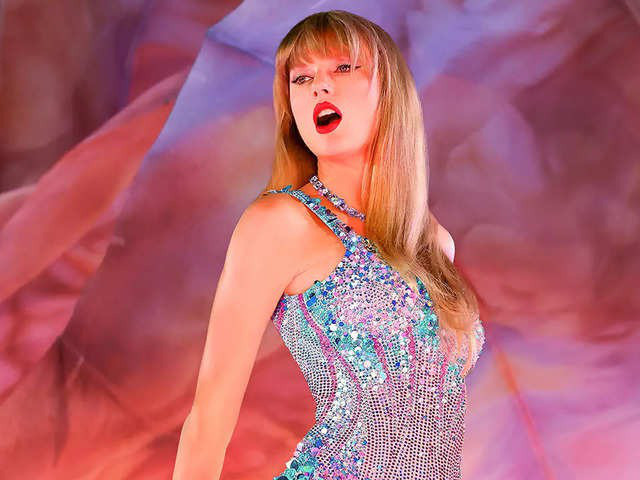Like the average Swiftie, I cried when Taylor Swift announced “1989 (Taylor’s Version).” But, as any true fan would know, the announcement was hardly a surprise; it was an inevitability we had all been waiting for. It is common knowledge that Taylor is in the process of re-recording her old albums, but the order of release remains (somewhat) unknown. However, Taylor did not leave us entirely in the dark; she has been dropping hints along the way. Taylor wrapped up the U.S. leg of her tour on Aug. 9 (commonly written as 8/9), and on that night, she wore exclusively blue costumes. Despite my unwavering certainty, I still cried. My tears were not solely a celebration of her monumental success; they were also a poignant reminder of the deeply personal connection I have with “1989.”

“1989” is not just an album to me; it is the very start of my consciousness, the birth of my “real life.” Middle school, as we all know, is a perplexing test of one’s character. In 2014, I started seventh grade, a tumultuous time marked by the loss of old friends, the development of new ones and the ultimate discovery of myself.
I recall the morning of Oct. 27, 2014, when I eagerly reached for my iPad and launched iTunes to listen to snippets of the album. In those days, there was no Apple Music or Spotify, and as a 12 year old, I lacked the funds to buy the entire album. So, I played the 30-second previews of each song, desperately trying to commit every note to heart. On the bus ride to school, I tried to sing the snippets from memory. That evening, I pleaded with my dad to drive my sister and me to Target to purchase the CD version, which came with exclusive Polaroid photos. My dad reluctantly agreed, and that excursion marked my first visit to Target, igniting another obsession for another time. In that moment, I felt an inexplicable connection to something greater than myself.

That year I even helped create the Taylor Swift fan club, endorsed by our science teacher. For the first time I realized I should be like other girls. Liking “girly” things was fun and created a bond with many different people. As an identical twin, I always had to stand out to be seen as my own person. I could not like Sleeping Beauty because she was my twin’s favorite princess. I pretended to like other princesses more even though her pink dress was my favorite. Taylor Swift changed that. For once, I did not have to be unique.
That summer, fortune smiled upon me as my generous aunt and uncle gifted me tickets to the “1989 World Tour.” Besides The Wiggles, Taylor Swift became the first artist I saw live. I was shocked she was real. I was spellbound throughout the entire evening, and even when it took us over two hours to escape the MetLife parking lot, my grin remained.
For me, “1989” was a mesmerizing journey filled with joyous memories, but the album and its era transcended mere entertainment. Beneath the veneer of its upbeat tunes lay a profound wellspring of pain, evident in Taylor’s songwriting. Image courtesy of Paolo Villanueva via Wikimedia Commons
Image courtesy of Paolo Villanueva via Wikimedia Commons
While Swift had already amassed a multitude of awards prior to the release of “1989,” this album marked a pivotal shift in her career and arguably revolutionized the music industry itself. Before “1989,” Taylor had predominantly focused on country music, and she even lost a Grammy for “Red” because critics found the album lacked “sonic cohesion,” according to Taylor Swift. Taylor took this critique to heart and channeled it into creating a full-fledged pop masterpiece, an album that shattered records with hit after hit. “1989” sold over a million copies in its first week according to Billboard and earned the Grammy for Album of the Year. However, global success came at a price. In her documentary “Miss Americana,” Taylor candidly revealed her battle with an eating disorder during the “1989 World Tour.” To the world, this era was electrifying, but for Taylor, it was a struggle to maintain the facade of perfection.
The original album cover depicted only Taylor’s lips and upper body, deliberately concealing her eyes and full face. Originally, the Polaroid showcased her full smile, yet she changed the cover as she felt insecure about it, deeming it insufficiently “cool” for an album cover. Her unwavering focus on crafting the best-selling album had led her to lose herself in the process.
Now, “1989 (Taylor’s Version)” showcases Taylor with a radiant, unabashed smile—the first time she has ever unveiled her joy so openly on an album cover. After her recovery from an eating disorder, her tumultuous feud with Kanye West in 2016 that tainted her reputation and the heartache of losing her music to Scooter Braun, Taylor has emerged as a renewed version of herself. She appears content and secure as one of the most accomplished artists in history. While her re-recording project began as a personal mission to regain ownership of her music, it has been embraced by fans as a grand spectacle. When I listen to “1989,” I am transported back to the seventh-grade version of myself, a young girl struggling with shyness, insecurity and the fear of not meeting others’ expectations. Some of those insecurities still linger, but I have evolved alongside Taylor Swift and our lives have become intrinsically intertwined.
I have no desire to relive seventh grade, but I do hope to create even more cherished memories with an album that holds profound meaning for both my past and present selves. “1989” reconnects me with the innocence of my childhood, a time when I made music videos to Taylor’s music and skipped through the aisles of Target. “1989 (Taylor’s Version)” inspires me to hope for the same exuberance and carefree energy as I embark on my senior year of college. The original “1989” Polaroids still hang on the wall of my new home in the South Commons after I took them out of my childhood bedroom. A lot has changed since then, but ultimately I am the same, a girl trying to find her place in this world.




